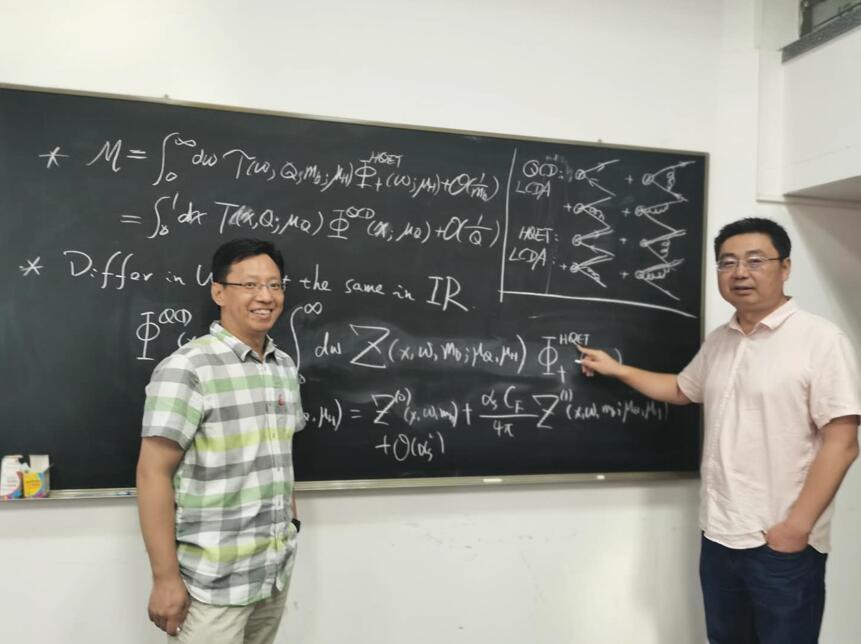Physicists Reveal Connection Between Two Nonperturbative Parameters to Help Predict Heavy Meson Production
Prof. Yu Jia from the Theoretical Physics Division of the Institute of High Energy Physics of CAS and his collaborators have unveiled for the first time some deep connections between two fundamental nonperturbative parameters that characterize the intrinsic properties of heavy mesons. This research is helpful for predicting heavy meson hard exclusive production processes with better accuracy. This work was published in Physical Review Letters on Sept. 21. It constitutes a natural continuation of the preceding work by Yu Jia et al. published in Physical Review D in 2019 and also represents important progress.
Quantum chromodynamics (QCD) is the fundamental theory to describe the strong interaction in nature, and heavy meson refers to a hadron composed of heavy quark and a light antiquark bound by the strong force. The study of the heavy hadron production mechanism is an important subject in the field of perturbative QCD. On the one hand, the heavy meson light-cone distribution amplitude (LCDA) defined in heavy quark effective theory (HQET) is the basic nonperturbative input parameter, which ubiquitously appears in predicting B meson exclusive decays, and plays a vital role in heavy flavor physics. On the other hand, the collinear factorization theorem failed to tackle B meson exclusive production and instead utilizes the heavy meson LCDA defined in QCD, which is poorly constrained at present.
Over the past three decades, it was commonly believed that these two sets of nonperturbative B meson LCDAs were independent of each other. Due to asymptotic freedom in QCD, physicists have realized that, although these two nonperturbative functions have drastically different ultraviolet behavior, they possess identical infrared behavior. The scientists then proposed a novel factorization theorem to link these two set of functions together: The QCD LCDA of B meson can be expressed as a convolution between the HQET LCDA of B meson and a perturbatively calculable short-distance coefficient. This factorization program not only helps to cleanly separate the physical effects affiliated with three important energy scales intrinsic to hard exclusive B production processes, but expedites the resummation of large logarithms. The novel theorem also employs the HQET LCDA of B meson as the input parameter, which has already been extensively studied in innumerable B meson decay channels, so that one can greatly improve the accuracy of theoretical predictions. This research is of important utility in precisely testing the CKM mechanism in the Standard Model and deepening our understanding of QCD.
This work is supported in part by the National Science Fund for Distinguished Young Scholars, the Collaborative Research Center CRC 110 (a Sino-German program funded by the NSFC and DFG), and the CAS-TWAS President’s Fellowship Program.

Yu Jia (right) and collaborator
Contact Information
Mr. Guo Lijun
ljguo@ihep.ac.cn